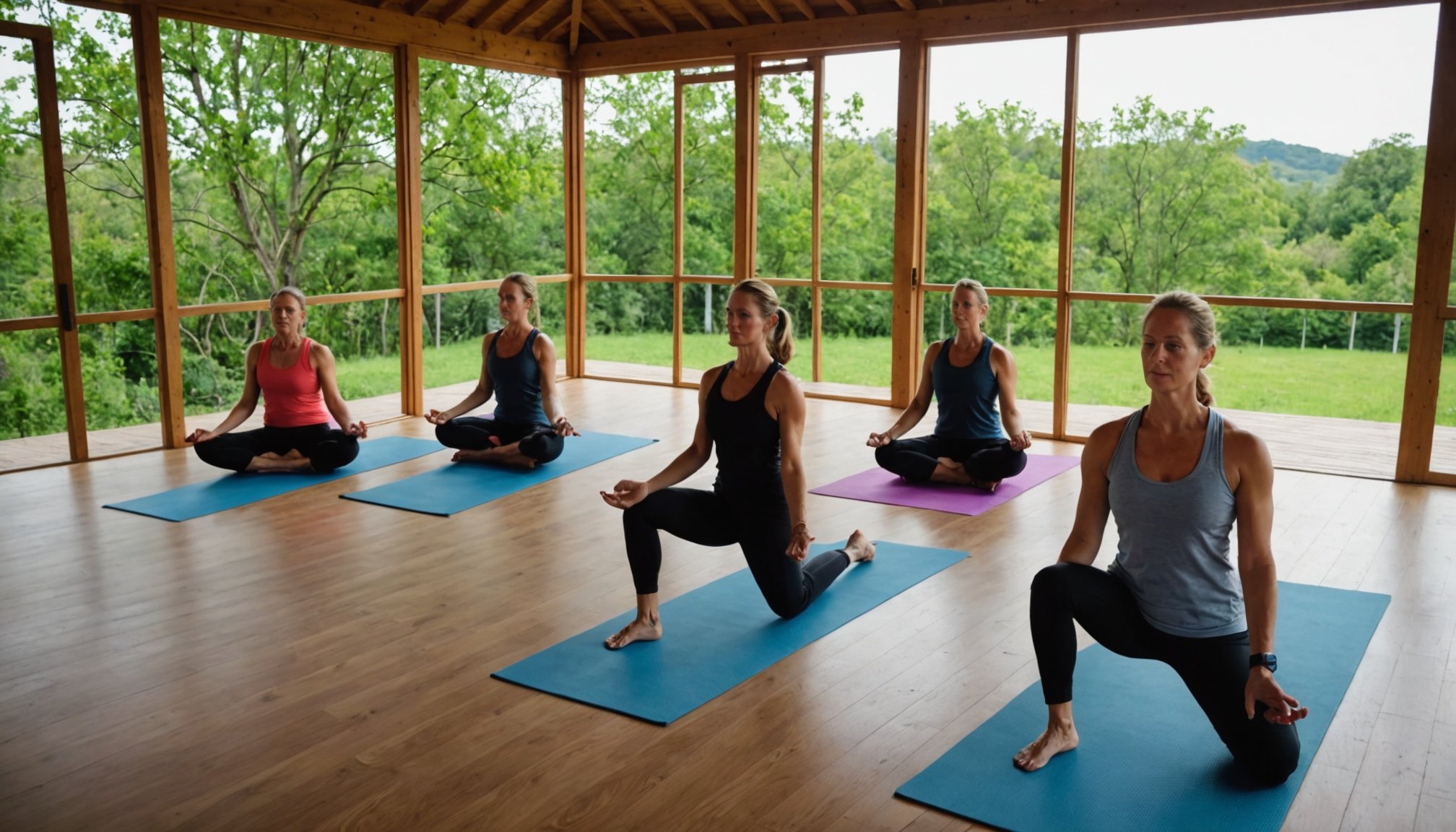Overview of Establishing a Yoga Retreat in the UK
In recent years, yoga retreats have gained popularity in the UK, offering a unique blend of relaxation and wellness. Establishing a yoga retreat not only provides a serene space for participants to unwind, but also offers operators the benefits of combining a business with personal passion.
However, creating such an environment involves adhering to comprehensive health and safety certifications. These standards ensure that facilities are safe, maintaining a high level of care for participants. Operators must be aware of regulations regarding accommodation, equipment, and emergency procedures. Compliance with these regulations can instill confidence in your retreat’s guests, providing them with peace of mind during their stay.
Also read : Unlocking Compliance: Essential Financial Reporting Guidelines for UK Fintech Startups
The benefits of running a yoga retreat are multi-faceted. For entrepreneurs, it’s an opportunity to forge a business immersed in wellness. Beyond business, it fosters a sense of community and offers participants a holistic approach to their well-being. As the demand for such retreats continues to grow in the UK, understanding the intricate details of setting up and maintaining a yoga retreat is crucial for success. Being informed and prepared on legal requirements facilitates a seamless experience for all involved parties.
Legal Requirements for a Yoga Retreat
Embarking on a yoga retreat venture requires not only a passion for wellness but also a keen understanding of legal requirements and yoga retreat guidelines. Navigating these essentials with precision can be pivotal in ensuring a smooth operation.
Additional reading : Essential Security Strategies for UK Cybersecurity Firms: Safeguarding Your Business
Understanding Business Legality
Creating a legal foundation for your yoga retreat involves multiple steps. First, registering your business is mandatory. This often involves choosing an appropriate business structure, such as a sole proprietorship or limited liability company, which impacts your liability and tax obligations. Speaking of taxes, understanding the tax implications and responsibilities specific to running a retreat will keep you compliant and financially sound.
Securing business insurance essentials is another critical step. This means protecting your venture against unforeseen eventualities and adds a layer of security for both you and your participants.
Planning Permissions and Zoning
Planning where to host your retreat necessitates meticulous attention to planning permissions and zoning. The importance of local council regulations cannot be understated. Compliance with these can mean the difference between a thriving retreat and costly legal disputes.
Acquiring necessary permits and ensuring that your chosen location adheres to specific zoning laws are non-negotiable to operate legally and avoid disruptions.
Health and Safety Certification Process
Understanding the health and safety certification process is vital for individuals and organisations aiming to ensure a safe environment. It involves a detailed procedure to achieve compliance and maintain safety standards.
Identifying Required Certifications
One of the initial steps in this process is identifying relevant health and safety certifications. These certifications vary by industry and role. For instance, yoga instructors may require specific certifications focusing on the physical safety and well-being of participants. Additionally, first aid training is often emphasised, underscoring its importance in risk management.
Steps to Achieve Certification
Achieving certification involves a series of well-defined steps. Preparing for health and safety assessments is crucial. This preparation includes organising necessary documentation and fulfilling reporting obligations. Maintaining compliance isn’t a one-time task; it requires adherence to ongoing standards.
Practical Examples of Certification Plans
To illustrate successful compliance, we explore practical examples, such as detailed case studies and sample checklists. These serve as guides for developing effective certification plans. Furthermore, leveraging resources for staying informed on health regulations is essential to adapt to any changes swiftly.
Resources for Compliance and Planning
Understanding the right compliance resources is crucial for successfully planning a yoga retreat. The journey begins with ensuring all necessary regulations and health needs are in check to provide a safe and fulfilling experience.
Government and Local Authority Resources
Accessing government guidelines is essential for understanding the local regulations applicable to yoga retreats. These can include zoning laws and health safety standards specific to the area. Additionally, collaborating with local health and safety services is invaluable for ensuring risk management is conducted with expertise. Engaging with local yoga associations can provide insights, support, and the networking opportunities necessary to ensure all your planning covers every angle.
Recommended Books and Online Tools
To deepen your knowledge, numerous essential literature texts offer comprehensive guides for yoga practitioners on setting up retreats. Online platforms are invaluable for organizing retreats, enabling streamlined coordination of bookings, accommodations, and itineraries. These platforms often include tools for managing health and safety compliance, integrating efficient checklist systems and monitoring capabilities.
Workshops and Training Opportunities
Participating in workshops and training designed for retreat planners can further enhance your planning skills. These events emphasize the importance of ongoing education, ensuring the latest practices and information are at your disposal. They also present invaluable networking opportunities within the yoga community, fostering connections that can support your planning journey.
Tips for Effective Planning of a Yoga Retreat
Planning a successful yoga retreat requires careful consideration and attention to detail. The key is to create a harmonious blend of activities, settings, and marketing strategies.
Choosing the Right Location
When selecting a location, it’s vital to balance accessibility with tranquility. A successful yoga retreat often combines serene environments with easy-to-reach venues. Consider factors like climate, local attractions, and whether the setting offers indoor or outdoor options for your sessions. The right location can profoundly affect the retreat’s ambiance and participant satisfaction.
Creating a Comprehensive Itinerary
An effective itinerary balances yoga classes with leisure activities. This ensures participants can enjoy a fulfilling experience. Don’t forget the importance of meal planning and nutrition, as these contribute to overall well-being. Thoughtful scheduling enhances engagement, leaving guests revitalized and eager for the next session.
Marketing Your Yoga Retreat
Effective online promotion is crucial for reaching potential attendees. Utilize social media creatively to expand your reach and consider partnering with wellness influencers who align with your retreat’s ethos. Collaborations like these can provide valuable visibility, attracting a diverse and enthusiastic audience.
Each element is integral to transforming your yoga retreat into an enriching and memorable experience.
Addressing Common Challenges
Embarking on planning a retreat comes with its fair share of challenges. Here’s how to tackle some of the most pressing issues.
Managing Participant Expectations
In order to cater to the diverse yoga backgrounds of participants, it is crucial to clearly communicate retreat objectives and activities. Implementing effective communication strategies ensures clarity. For instance, sharing a detailed itinerary ahead of time can help set accurate expectations. Furthermore, establish feedback mechanisms during the retreat to facilitate ongoing improvements. Regular check-ins and suggestion boxes are simple ways to gather valuable participant input.
Handling Logistics and Supplies
Having a meticulous approach to logistics and supplies is vital. Keep an essential equipment and supplies checklist to ensure nothing is overlooked. Managing transportation and accommodation involves coordinating travel schedules and confirming bookings well in advance. Moreover, always have a backup plan in place for navigating last-minute changes, like unexpected weather conditions or cancellations.
Financial Management
Professional financial management starts by accurately budgeting for your retreat. Consider all costs, including venue hire and instructor fees, while also having a contingency fund ready. Handling deposits and cancellations with a clear policy safeguards financial interests. To expand funding opportunities, consider finding sponsors or forming partnerships with local businesses. This can alleviate some of the financial pressures.












